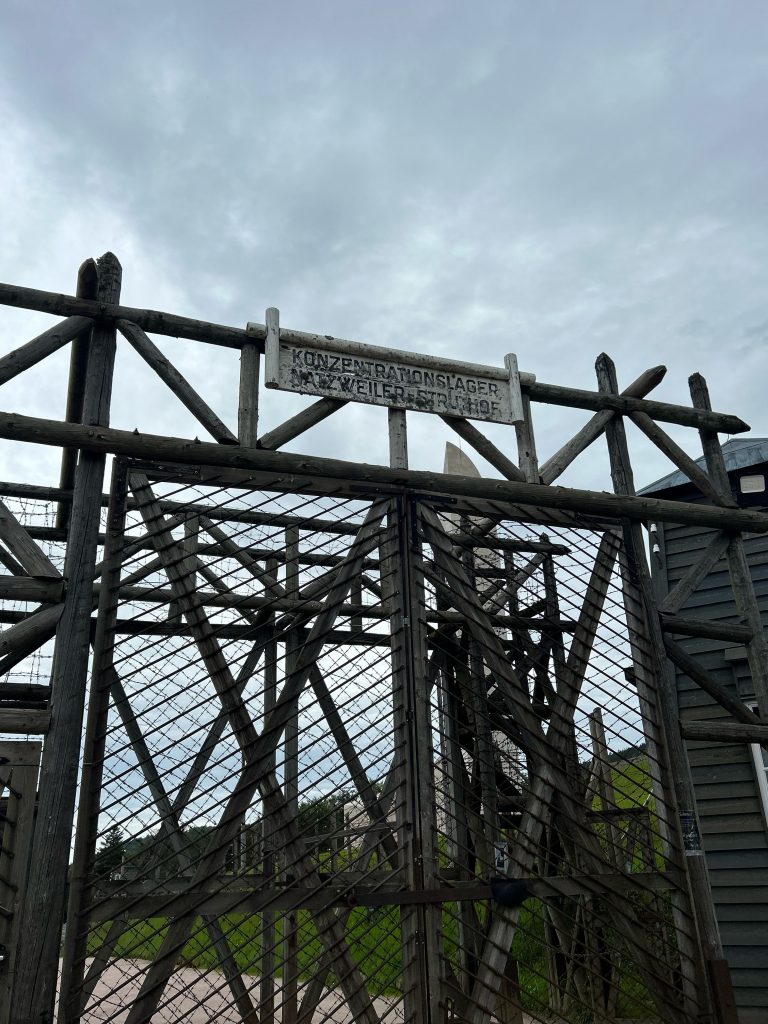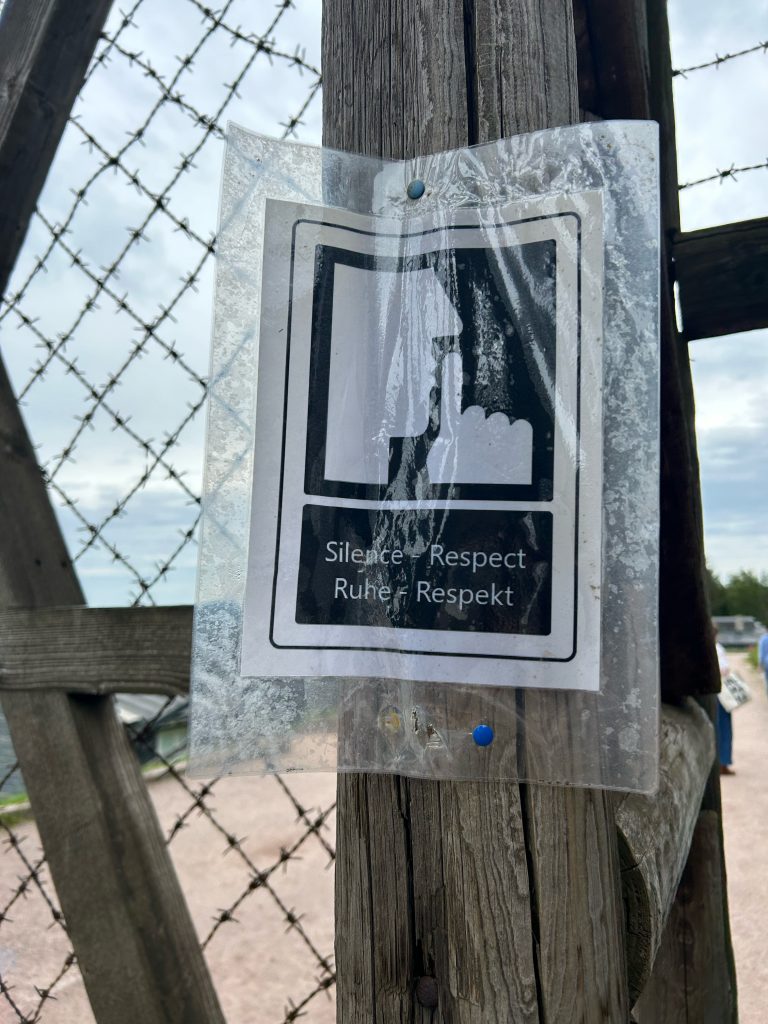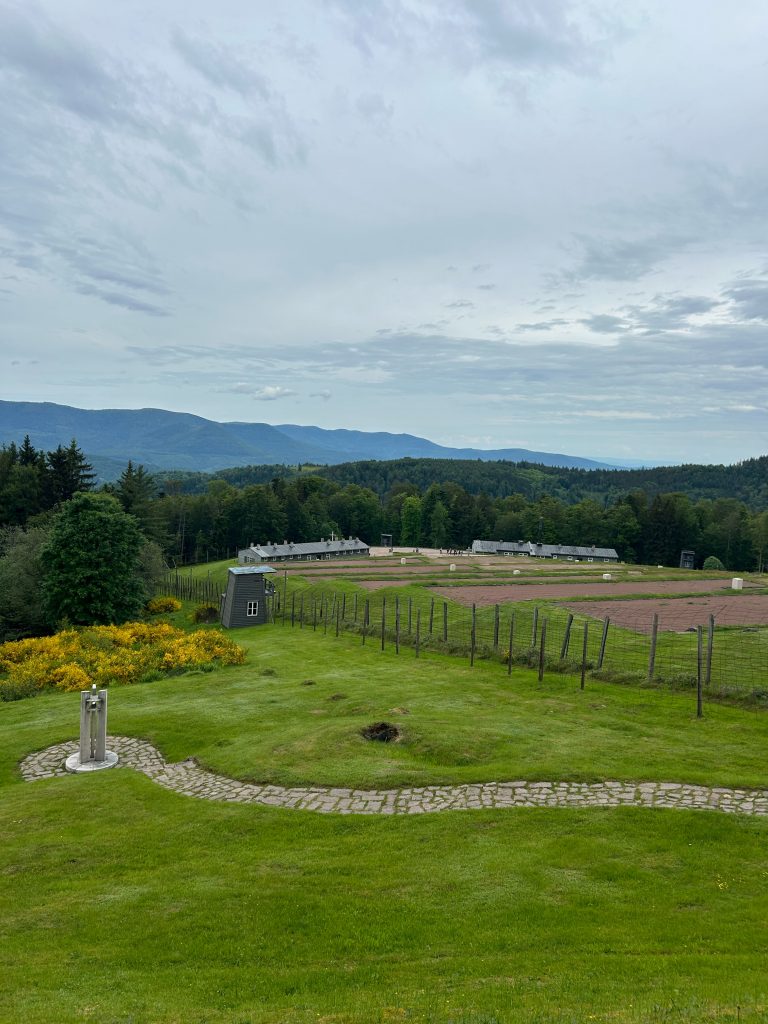Essay and photos by Rachel Rines.
In the first seconds of each episode of the 2024 television show, The Tattooist of Auschwitz, a black screen appears with the text: “This series is inspired by ‘The Tattooist of Auschwitz’ and is based on the memories of Holocaust survivor Lali Sokolov. Some names have been changed and some elements fictionalized for dramatic purposes.” A few seconds later, only one phrase remains, all of the other text fading around it: “the memories of Lali Sokolov.”
During our May 26th visit to Natzweiler-Struthof, the only Nazi concentration camp on French soil, I found myself continually asking the question, “Is this the original?” I knew that some elements, such as the gate and barbed wire, had been reconstructed; however, inside the barrack, I looked down at my feet and wondered, “Are these the original floors? Am I casually walking on the same ground as prisoners who were once forced to walk here?”
Near the end of our visit, as I walked outside to overlook the camp, gazing at flowers placed to memorialize those who tragically and unjustly lost their lives at Natzweiler, I realized it didn’t matter. What would it change should those floors be original, or should the walls have been painted white, when in 1944 they were gray?
In her book, Auschwitz and After, Charlotte Delbo writes of her firsthand account of her time in Auschwitz, “I am not sure that what I have written here is true. I am sure that it is truthful.”
Some elements may be fictionalized for dramatic purposes.
The gate of Natzweiler-Struthof may have been constructed higher to appear more intimidating, or the barbed wire made slightly thicker.
None of that changes what happened in these camps.
And none of that changes the truthfulness of the memory of a survivor.
The memory will remain. We remember.


